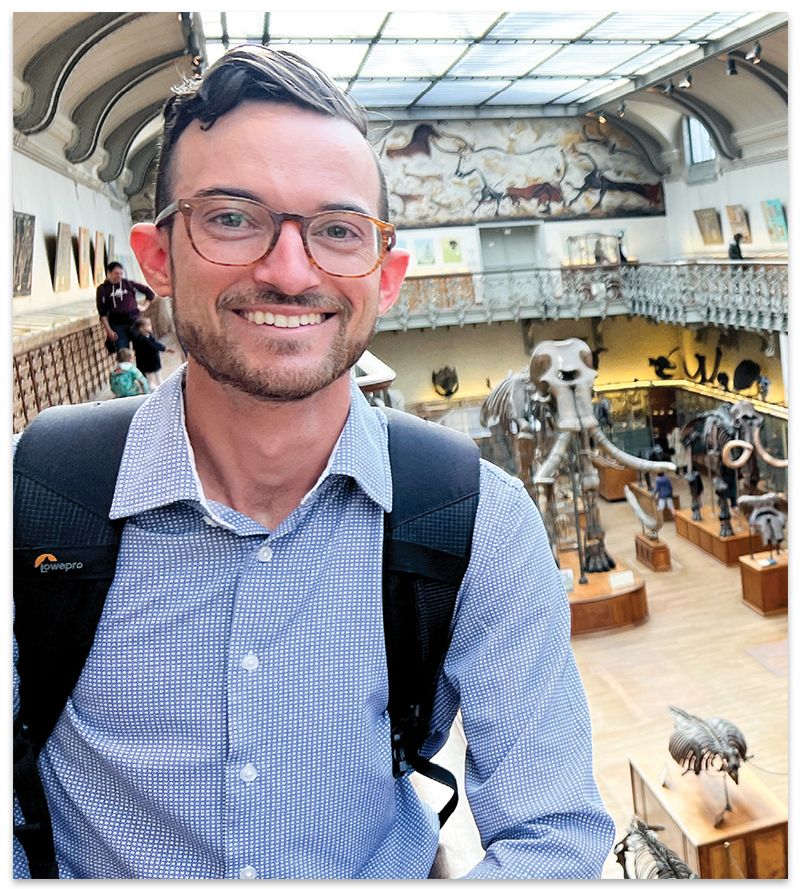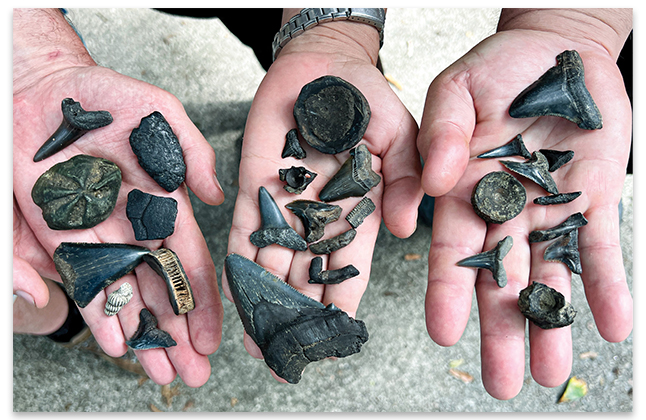Hint: Many are in plain sight

Charleston Fossil Adventures owner Ashby Gale at the Gallery of Paleontology and Comparative Anatomy at the French National Museum of Natural History in Paris.
Forget Jurassic Park. As recently as 11,000 years ago, the Lowcountry was home to mammoths, mastodons, saber-toothed cats, 20-foot-tall ground sloths, and armadillos the size of cars. In more recent history—mere decades ago—young Ashby Gale, like many four-year-olds, knew he wanted to grow up and work with dinosaurs. Today, Charleston Fossil Adventures is counting on the fact that many of us will share his excitement for the archaic relics strewn about Charleston.
“The Lowcountry presents a pretty unique look at paleontology,” Gale says. “All of our fossils are primarily exposed through man-made activities like digging, beach renourishment, or new construction. We get a mixture of fossils from sharks, sea turtles, dolphins, whales, seals, walruses, fish, and lots of other marine critters from 30 million years ago to the Ice Age (11,000 to 2.5 million years ago), when the coastline was 50 miles farther out.”

The outfitter helps people legally find Charleston’s abundant fossils—the keyword being “legal.” Anyone can use a bucket and a shovel, which can destroy our fragile rivers and navigable waterways. That kind of dig is illegal, and Gale, a paleontologist, is always mindful of the ecology around him when searching for fossils. “We are surface collecting and using our eyes,” he says. “We don’t move anything aside. The water has done the heavy lifting for us, sorting and cleaning and grouping by size. We have a ‘leave no trace’ policy; we haul out garbage if we see it, and we leave the environment better than we found it.”
Tours range from the three-hour Folly or Edisto beach adventures that can accommodate would-be paleontologists as young as five, to four- or eight-hour fossil kayaking adventures that take treasure seekers to islands where man-made activities have brought older fossils to the surface. If you have your own vessel, you can hire Gale to accompany you to an island on a BYOB (Bring Your Own Boat) adventure. The eagle-eyed Gale often points out fossils in plain sight to participants, who get an apron with pockets to store their finds. If someone uncovers something rare, Gale encourages them to donate it to the Mace Brown Museum of Natural History at the College of Charleston, where the donor’s name will be listed in perpetuity as discovering the fossil, as well as in any scientific publication where it might be mentioned. “Spoiler alert: for 99.9 percent of shark teeth you find, the museum doesn’t want them. They have enough,” he says. “But [in 2017] we were able to document the first record of fossil porpoises on the entire Atlantic Coast!”

During fossil kayaking adventures, as many as eight people can boat to secluded shorelines to hunt for fossils.
Still, Gale doesn’t dismiss the importance of shark teeth. “My business here is to say, ‘Yeah, shark teeth are cool, but did you know you are holding a piece of ivory from a mammoth tusk right now?’ That happened last week; a girl found it,” Gale says. “Shark teeth are the gateway fossil in beach collecting.”
DIG IN
WATCH: Shark teeth finding tips from Ashby Gale: